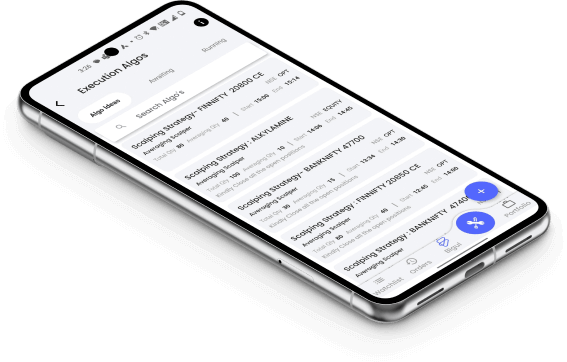Key Headlines
The Indian rupee spot against the US dollar end sharply lower to surpass 91 mark at record low on 4th consecutive day Tuesday, pressure by increased hedging activity, short covering, uncertainty over trade deal and foreign outflows from equity as well bonds makes keep rupee under check. However down side support seen from weakness in dollar index, fall in Crude prices and likely central bank intervention. The rupee had declined past 90 for the first time on December 3.
The rupee at NSE Future 29 Dec-25. ended lower by 20 paise at 91.05 against previous close of 90.85 and after make low of 90.85 and high of 91.19.
The rupee is one of Asia's worst performers, having fallen over 6% against the dollar year-to-date, as steep U.S. tariffs of up to 50% on Indian goods crimp exports to its biggest market, taking the sheen off its equities for foreign investors.
In terms of portfolio outflows, India is one of the worst hit markets globally, with foreign investors' net selling of its stocks amounting to nearly $18 billion so far this year. The weakness in portfolio investment has also coincided with a slowdown in foreign direct investment, adding to the pressure.
India's private sector activity expanded at its weakest pace in 10 months in December on a slowdown in new orders and hiring slowed to a near-standstill, according to a survey of private businesses on Tuesday. HSBC's Flash India Composite PMI, compiled by S&P Global, fell to 58.9 this month from 59.7 in November, marking the lowest reading since February. The 50 mark separates growth from contraction.
The U.S. dollar fell against major peers on Tuesday after the release of delayed economic data showing stronger-than-expected jobs growth, signalling that the Federal Reserve might be cautious in continuing to cut interest rates in the near term.
The U.S economy added 64,000 jobs in November, surpassing an estimate. That came after the economy shed 105,000 jobs in October, according to Labor Department data.
The European Central Bank is widely expected to hold interest rates on Thursday. The Bank of England, on the other hand, looks set for a knife-edge vote on interest rates this week with Governor Andrew Bailey expected to change his view and tip the balance for a cut.
The Bank of Japan is widely expected to raise interest rates on Friday, giving the yen an advantage over a dollar that could lose support if expected U.S. rate cuts emerge early next year. The Bank of England and European Central Bank are among central banks making monetary policy decisions this week. Markets have almost fully priced in a Bank of England cut as inflation finally shows signs of easing while the ECB is expected to leave rates unchanged.
The dollar index , which measures the greenback against a basket of currencies including the yen and the euro, fell 0.22% to 98.05. It is on track for the second straight session of losses. The euro was up 0.3% to $1.1788 against the greenback, touching its highest level since September and on track for the fifth consecutive session of gains. The dollar dropped 0.38% to 154.615 against the yen ahead of the BoJ's decision on Friday.
Fed funds futures are pricing an implied 73.4% probability of a hold in rates at the U.S. central bank's next meeting on January 28, up from nearly 70% a week ago, according to the CME Group's FedWatch tool.
In cryptocurrencies, bitcoin gained 1.14% to $87,212.46, on track to snap four straight sessions of losses. Ether declined 0.51% to $2,929.19.
| Currency | LTP | S1 | S2 | R1 | R2 | Trend |
|---|---|---|---|---|---|---|
| USDINR | 91.05 | 90.30 | 89.80 | 91.25 | 92.0 | BULLISH |
| FUTURE | ||||||
| EURINR | 107.12 | 106.0 | 105.10 | 107.50 | 108.30 | BULLISH |
| FUTURE | ||||||
| GBPINR | 122.13 | 121.0 | 120.0 | 122.20 | 123.0 | BULLISH |
| FUTURE | ||||||
| JPYINR | 59.0 | 58.10 | 57.40 | 59.0 | 59.60 | SIDEWAYS |
| FUTURE | ||||||
Vibhu Ratandhara
Digitally signed by Vibhu Ratandhara Date: 2025.12.17
Disclosure:M/s. Bonanza Portfolio Ltd here by declares that views expressed in this report accurately reflect view point with subject to companies/securities. M/s. Bonanza Portfolio Ltd has taken reasonable care to achieve and maintain independence and objectivity in making any recommendations. The Analysts engaged in preparation of this Report or his/her relative: - (a) do not have any financial interests in the subject company mentioned in this Report; (b) do not own 1% or more of the equity securities of the subject company mentioned in the report as of the last day of the month preceding the publication of the research report; (c) do not have any material conflict of interest at the time of publication of the Report. The Analysts engaged in preparation of this Report:- (a) have not received any compensation from the subject company in the past twelve months; (b) have not managed or co-managed public offering of securities for the subject company in the past twelve months; (c)have not received any compensation for investment banking or merchant banking or brokerage services from the subject company in the past twelve months; (d) have not received any compensation for products or services other than investment banking or merchant banking or brokerage services from the subject company in the past twelve months; (e) has not received any compensation or other benefits from the subject company or third party in connection with the Report; (f) has not served as an officer, director or employee of the subject company; (g) is not engaged in market making activity for the subject company.
M/s. Bonanza Portfolio Ltd operates under the regulation of SEBI Regn No. INH100001666 and research analyst engaged in preparation of report
Disclaimer:This research report has been published by M/s. Bonanza portfolio Ltd and is meant solely for use by the recipient and is not for circulation. This document is for information purposes only and information / opinions / views are not meant to serve as a professional investment guide for the readers. Reasonable care has been taken to ensure that information given at the time believed to be fair and correct and opinions based thereupon are reasonable, due to the nature of research it cannot be warranted or represented that it is accurate or complete and it should not be relied upon as such. If this report is inadvertently send or has reached to any individual, same may be ignored and brought to the attention of the sender. Preparation of this research report does not constitute a personal recommendation or take into account the particular investment objectives, financial situations, or needs of individual clients. Past performance is not a guide for future performance. This Report has been prepared on the basis of publicly available information, internally developed data and other sources believed by Bonanza portfolio Ltd to be reliable. This report should not be taken as the only base for any market transaction; however this data is representation of one of the support document among other market risk criterion. The market participant can have an idea of risk involved to use this information as the only source for any market related activity. The distribution of this report in definite jurisdictions may be restricted by law, and persons in whose custody this report comes, should observe, any such restrictions. The revelation of interest statements integrated in this analysis are provided exclusively to improve & enhance the transparency and should not be treated as endorsement of the views expressed in the analysis. The price and value of the investments referred to in this report and the income from them may go down as well as up. Bonanza portfolio Ltd or its directors, employees, affiliates or representatives do not assume any responsibility for, or warrant the accuracy, completeness, adequacy and reliability of such information / opinions / views. While due care has been taken to ensure that the disclosures and opinions given are fair and reasonable, none of the directors, employees, affiliates or representatives of M/s. Bonanza portfolio Ltd shall be liable. Research report may differ between M/s. Bonanza portfolio Ltd RAs and other companies on account of differences in, personal judgment and difference in time horizons for which recommendations are made. Research entity has not been engaged in market making activity for the subject company. Research analyst has not served as an officer, director or employee of the subject company. Research analyst have not received any compensation/benefits from the Subject Company or third party in connection with the research report





